 1996 Volvo V40 Combi (VW) Dimensions, Size & Specs
1996 Volvo V40 Combi (VW) Dimensions, Size & SpecsMeasurements of the 1996 Volvo V40 Combi, engineered for optimal performance and comfort
| Dimensions | |
|---|---|
| Length: | 4480-4516 mm176.4-177.8 in14.7-14.8 ft |
| Width: | 1720 mm67.7 in5.6 ft |
| Height: | 1410-1425 mm55.5-56.1 in4.6-4.7 ft |
| Trunk Capacity: | 413-471 liter14.6-16.6 cu ft |
| Trunk Capacity (Max): | 1420-1421 liter50.1-50.2 cu ft |
| Weight Specifications | |
| Curb Weight: | 1250-1335 kg2756-2943 lbs |
| Maximal permitted Weight: | 1740-1810 kg3836-3990 lbs |
| Tire Specifications | |
| Rims Sizes: |
|
| Tire Sizes: |
|
The Volvo V40 Combi, produced from 1995 to 2004, is a compact station wagon that balances practicality with Swedish design and engineering. The 1996 model year offers a vehicle length ranging between 4480 mm and 4516 mm (176.4 - 177.8 inches), a width of approximately 1716 mm to 1720 mm (67.5 - 67.7 inches), and a height between 1410 mm and 1425 mm (55.5 - 56.1 inches). This size profile ensures the V40 Combi suits drivers looking for a spacious yet maneuverable car that can comfortably navigate urban environments as well as longer trips. Weighing in with a curb weight from 1250 kg to 1335 kg (2756 - 2945 lbs) and maximum gross weight between 1740 kg to 1810 kg (3836 - 3991 lbs), it strikes a good balance between durability and fuel efficiency. The luggage capacity is a strong point, offering 413 to 471 liters (14.6 - 16.6 cubic feet) with rear seats upright and expanding substantially to around 1420 - 1421 liters (50.1 - 50.1 cubic feet) with rear seats folded down, making it highly versatile for cargo and family needs. Rim sizes offered typically range between 15 and 16 inches, supported by tire sizes such as 195/55 R15, 185/65 R15, 205/50 R16, 195/60 R15, and 205/55 R15, providing a combination of comfort and handling suited for the vehicle's design. Overall, the Volvo V40 Combi (VW) of the late 1990s offers a well-sized, efficient, and practical station wagon option within the Volvo lineup, ideal for those needing a reliable and spacious car with good load flexibility.
Discover the standout features that make the 1996 Volvo V40 Combi a leader in its class
Have a question? Please check our knowledgebase first.
The Volvo V40 Combi (VW) produced between 1995 and 2004 measures between 4480 mm and 4516 mm (176.4 - 177.6 inches) in length. Its width ranges from 1716 mm to 1720 mm (67.5 - 67.7 inches), and the height varies between 1410 mm and 1425 mm (55.5 - 56.1 inches). These dimensions reflect a compact station wagon configuration typical for the late 1990s to early 2000s models, providing a roomy but manageable footprint ideal for urban and suburban driving.
The curb weight of the Volvo V40 Combi (VW) from 1996 ranges between 1250 kg and 1335 kg (approximately 2,756 - 2,944 lbs). The vehicle's maximum permissible weight varies from 1740 kg to 1810 kg (3,835 - 3,990 lbs). These weights contribute to the vehicle's balance between fuel efficiency and safety. A relatively modest weight helps in handling and acceleration while maintaining structural integrity for safety. The variation in weight depends on trim level and equipment, but overall, the V40 Combi provides a stable and predictable driving experience.
The Volvo V40 Combi (VW) offers a versatile cargo space. With the rear seats upright, the luggage capacity is between 413 and 471 liters (approximately 14.6 to 16.6 cubic feet), which is spacious for daily cargo needs or small family trips. When the rear seats are folded down, the cargo space dramatically expands to between 1420 and 1421 liters (about 50.1 cubic feet), allowing for the transport of larger items or increased luggage on longer journeys. This adaptability underlines the V40's practicality as a station wagon.
The Volvo V40 Combi (VW) from 1996 typically comes fitted with rims sized 15 or 16 inches. Corresponding standard tire sizes include 195/55 R15, 185/65 R15, 205/50 R16, 195/60 R15, and 205/55 R15. These tire and rim combinations were chosen to balance comfort, handling, and safety. The variety in tire sizes supports different trims and optional packages, ensuring consumers could optimize their vehicle for either a smoother ride or slightly sportier handling within the vehicle's station wagon market segment.
Yes, the Volvo V40 Combi (VW) fits comfortably into a standard residential garage. With its length between 4480 and 4516 mm (about 14.7 to 14.8 feet), width approximately 1716 to 1720 mm (67.5 to 67.7 inches), and height ranging from 1410 to 1425 mm (55.5 to 56.1 inches), the V40 Combi is designed for practical use, including easy garage parking. Standard garages usually have widths starting at about 2.4 meters (7.9 feet), and heights over 2 meters (6.5 feet), so this model fits well within those dimensions, allowing for safe parking and convenient access.
The Volvo V40 Combi (VW), representing the first generation produced from 1995 to 2004, replaced the Volvo 440/460 range as Volvo’s compact family car line. Compared to the predecessor models, the V40 Combi was larger in overall dimensions, particularly in length and cargo capacity. The length increase to approximately 4.48 - 4.52 meters (176.4 - 177.6 inches) offered more interior space and a more practical station wagon layout. Width was slightly widened to enhance cabin comfort. This evolution reflected Volvo’s intent to appeal to customers seeking a more spacious compact wagon with improved functionality over the older 440/460 series.
The Volvo V40 Combi (VW) 1996 generation was competitive in size when compared to other compact station wagons from the mid-to-late 1990s. For example, compared to the Volkswagen Golf Variant or the Opel Astra Caravan of the same period, the V40 was slightly longer (4480-4516 mm versus approx. 4200-4400 mm) and offered similar width and height. Its cargo capacity, especially with seats folded, was on the higher end, with over 1400 liters, rivaling or exceeding some competitors in its segment. Thus, the V40 combined compact exterior dimensions with relatively generous interior volume, making it a practical choice among European wagons of its time.
The Volvo V40 Combi (VW) has a height ranging from 1410 mm to 1425 mm (approximately 55.5 to 56.1 inches). This moderate height provides adequate headroom for front and rear passengers, typical for a compact station wagon from this period. While not as tall as larger SUV or crossover vehicles, the height strikes a good balance between driving dynamics and interior comfort. Passengers benefit from a spacious cabin feel without sacrificing the vehicle's aerodynamic profile or increasing its center of gravity, which supports safe and comfortable handling.
With a width between 1716 mm and 1720 mm (67.5 to 67.7 inches), the Volvo V40 Combi (VW) is relatively narrow compared to some other wagons and compact SUVs, which enhances its maneuverability, especially in urban environments. The width allows the vehicle to navigate tight streets and parking spaces more easily than wider competitors. This is beneficial in crowded city areas where narrower vehicles have an advantage in parking and lane positioning. Combined with the vehicle’s moderate length, the V40 Combi offers good practicality without compromising interior space.
The Volvo V40 Combi (VW) 1996 generation offers rims in 15 and 16-inch sizes. Common tire pairings include 195/55 R15, 185/65 R15, 205/50 R16, 195/60 R15, and 205/55 R15, providing some flexibility for drivers. Larger rims, such as 16-inch, can offer better handling and a sportier look, but they sometimes result in a firmer ride due to lower-profile tires. Meanwhile, the 15-inch rims generally contribute to a smoother ride with more tire sidewall cushioning. Owners may choose rim size based on preference between ride comfort and handling performance.
Discover similar sized cars.

| Model Year: | 2013 |
|---|---|
| Length: | 4560 mm179.5 in |
| Width: | 1760 mm69.3 in |
| Height: | 1460 mm57.5 in |
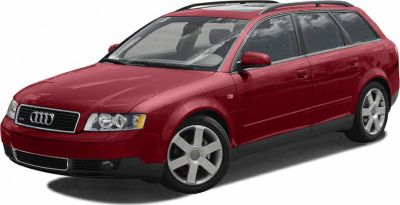
| Production: | 2001-2004 |
|---|---|
| Model Year: | 2002 |
| Length: | 4548 mm179.1 in |
| Width: | 1772 mm69.8 in |
| Height: | 1428 mm56.2 in |

| Model Year: | 1994 |
|---|---|
| Length: | 4510 mm177.6 in |
| Width: | 1695 mm66.7 in |
| Height: | 1386 mm54.6 in |
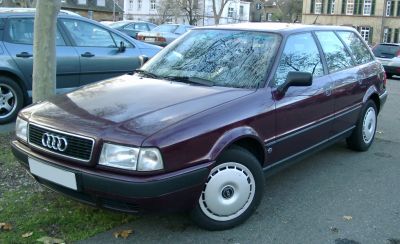
| Production: | 1991-1995 |
|---|---|
| Model Year: | 1992 |
| Length: | 4482 mm176.5 in |
| Width: | 1695 mm66.7 in |
| Height: | 1410 mm55.5 in |
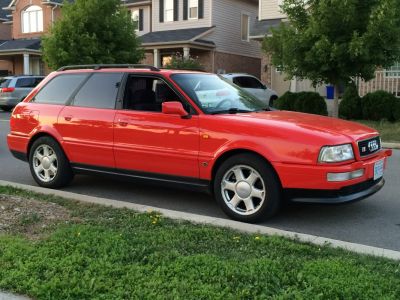
| Production: | 1992-1995 |
|---|---|
| Model Year: | 1992 |
| Length: | 4509 mm177.5 in |
| Width: | 1930 mm76.0 in |
| Height: | 1386 mm54.6 in |

| Production: | 2012-2013 |
|---|---|
| Model Year: | 2012 |
| Length: | 4559 mm179.5 in |
| Width: | 1766 mm69.5 in |
| Height: | 1461 mm57.5 in |
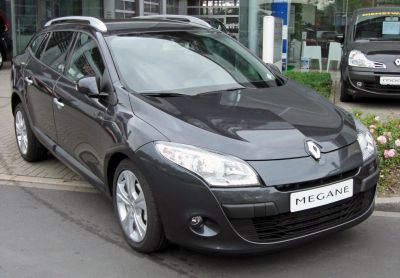
| Production: | 2009-2012 |
|---|---|
| Model Year: | 2009 |
| Length: | 4559 mm179.5 in |
| Width: | 1766 mm69.5 in |
| Height: | 1461 mm57.5 in |
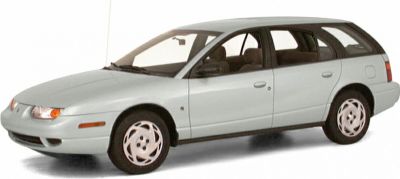
| Production: | 1995-2003 |
|---|---|
| Model Year: | 1996 |
| Length: | 4478-4524 mm176.3-178.1 in |
| Width: | 1687-1718 mm66.4-67.6 in |
| Height: | 1364-1412 mm53.7-55.6 in |
